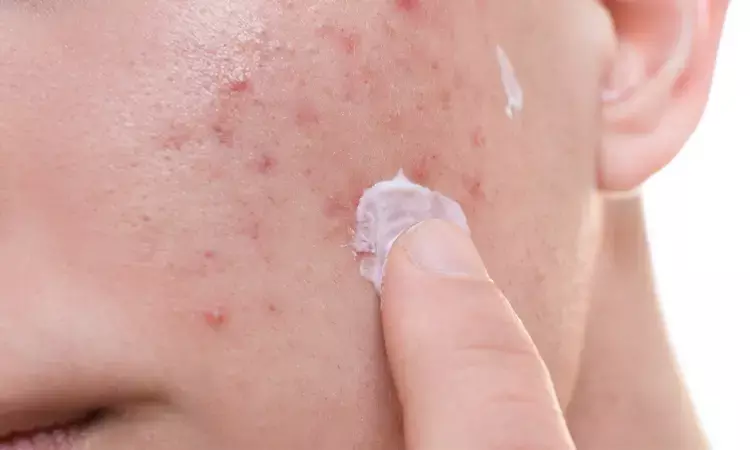- Home
- Medical news & Guidelines
- Anesthesiology
- Cardiology and CTVS
- Critical Care
- Dentistry
- Dermatology
- Diabetes and Endocrinology
- ENT
- Gastroenterology
- Medicine
- Nephrology
- Neurology
- Obstretics-Gynaecology
- Oncology
- Ophthalmology
- Orthopaedics
- Pediatrics-Neonatology
- Psychiatry
- Pulmonology
- Radiology
- Surgery
- Urology
- Laboratory Medicine
- Diet
- Nursing
- Paramedical
- Physiotherapy
- Health news
- Fact Check
- Bone Health Fact Check
- Brain Health Fact Check
- Cancer Related Fact Check
- Child Care Fact Check
- Dental and oral health fact check
- Diabetes and metabolic health fact check
- Diet and Nutrition Fact Check
- Eye and ENT Care Fact Check
- Fitness fact check
- Gut health fact check
- Heart health fact check
- Kidney health fact check
- Medical education fact check
- Men's health fact check
- Respiratory fact check
- Skin and hair care fact check
- Vaccine and Immunization fact check
- Women's health fact check
- AYUSH
- State News
- Andaman and Nicobar Islands
- Andhra Pradesh
- Arunachal Pradesh
- Assam
- Bihar
- Chandigarh
- Chattisgarh
- Dadra and Nagar Haveli
- Daman and Diu
- Delhi
- Goa
- Gujarat
- Haryana
- Himachal Pradesh
- Jammu & Kashmir
- Jharkhand
- Karnataka
- Kerala
- Ladakh
- Lakshadweep
- Madhya Pradesh
- Maharashtra
- Manipur
- Meghalaya
- Mizoram
- Nagaland
- Odisha
- Puducherry
- Punjab
- Rajasthan
- Sikkim
- Tamil Nadu
- Telangana
- Tripura
- Uttar Pradesh
- Uttrakhand
- West Bengal
- Medical Education
- Industry
Adapalene and Benzoyl Peroxide Gel Therapy may halt worsening of Acne Scars

Japanese Dermatological Association strongly recommend maintenance therapy following the remission of inflammation, citing the significant advantages it offers in preventing atrophic scarring of acne vulgaris. The association's recommendation is backed by a recent study published in The Journal of Dermatology that investigated the efficacy of maintenance therapy using adapalene 0.1%/benzoyl peroxide 2.5% gel and benzoyl peroxide 2.5% gel, shedding light on their effects on atrophic scarring.
The comprehensive study, involving 126 participants, was conducted over 24 weeks and produced compelling results. The participants were divided into three groups: the adapalene/benzoyl peroxide group (40 patients), the benzoyl peroxide group (44 patients), and a control group that did not receive maintenance treatment drugs (42 patients). Remarkably, 111 of these patients successfully completed the trial.
The primary endpoint of the study was the treatment success rate, defined as the percentage of patients with inflammatory lesions maintained at 10 or fewer. The results were striking, with an 89.2% success rate in the adapalene/benzoyl peroxide group, 87.5% in the benzoyl peroxide group, and only 47.4% in the control group. These figures highlight a significant advantage for the treatment groups over the control group, with both treatment groups demonstrating statistically higher success rates compared to the control group (P = 0.0006).
Furthermore, the study addressed atrophic scarring, a common concern for acne sufferers. One of the secondary endpoints evaluated the rate of change in the number of atrophic scars. The adapalene/benzoyl peroxide group and the benzoyl peroxide group both exhibited significant improvements from baseline at week 24 (P = 0.0004 and P < 0.0001, respectively). In contrast, the control group saw a notable worsening in three-dimensional image analysis parameters (P = 0.0276 for affected area, P = 0.0445 for volume, and P = 0.0182 for maximum depth).
While the study reported adverse drug reactions in 7.5% of patients in the adapalene/benzoyl peroxide group, none were noted in the benzoyl peroxide group. This suggests that the treatment is generally well-tolerated.
Source:
Tanizaki, H., Hayashi, N., & Abe, M. (2023). Evaluation of the efficacy of maintenance therapy for acne vulgaris using adapalene 0.1%/benzoyl peroxide 2.5% gel and benzoyl peroxide 2.5% gel for 24 weeks and assessment of atrophic acne scars using three‐dimensional image analysis. In The Journal of Dermatology. Wiley. https://doi.org/10.1111/1346-8138.16942
Neuroscience Masters graduate
Jacinthlyn Sylvia, a Neuroscience Master's graduate from Chennai has worked extensively in deciphering the neurobiology of cognition and motor control in aging. She also has spread-out exposure to Neurosurgery from her Bachelor’s. She is currently involved in active Neuro-Oncology research. She is an upcoming neuroscientist with a fiery passion for writing. Her news cover at Medical Dialogues feature recent discoveries and updates from the healthcare and biomedical research fields. She can be reached at editorial@medicaldialogues.in
Dr Kamal Kant Kohli-MBBS, DTCD- a chest specialist with more than 30 years of practice and a flair for writing clinical articles, Dr Kamal Kant Kohli joined Medical Dialogues as a Chief Editor of Medical News. Besides writing articles, as an editor, he proofreads and verifies all the medical content published on Medical Dialogues including those coming from journals, studies,medical conferences,guidelines etc. Email: drkohli@medicaldialogues.in. Contact no. 011-43720751


